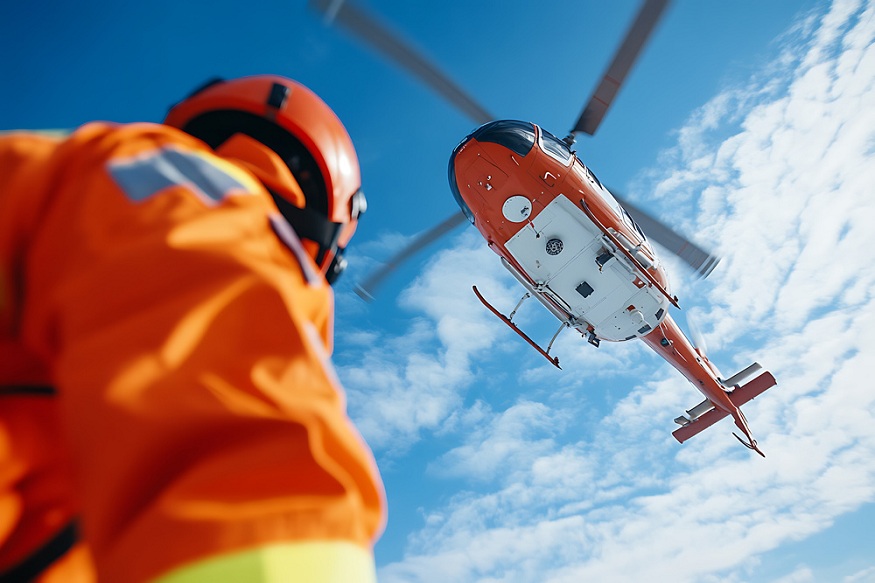Picture a scene where someone is hurt in the mountains, stranded miles from any help. Or consider a car crash at the busiest time on the freeway. During these crucial times, helicopters and planes transform into airborne medical centers. They work urgently to rescue people. What makes these aircraft so special? The answer lies in their amazing integrated technology.
Flying Emergency Rooms
Medical helicopters are not merely standard aircraft with a stretcher placed in the rear. They’re basically airborne emergency rooms that travel at 150 miles per hour. The interiors of these helicopters are entirely reconfigured to accommodate life-saving gear in an area smaller than the average bedroom.
This situation presents a major difficulty for engineers. The equipment needs to be powerful, but also easy to carry. It must work flawlessly, even as the aircraft is tossed about and turned by the turbulence. Moreover, every part must function using the helicopter’s electrical system without draining too much energy.
Monitors That Never Sleep
The heart monitors used in air ambulances are unlike those used in standard hospitals. The reason is that they must work under specific circumstances. Even in poor weather, their sophisticated sensors can track a patient’s vital signs while the helicopter is in transit. The monitors provide clear readings of heart rate, blood pressure, and oxygen levels. These are easily readable by medical personnel, even when the lighting is low.
Some monitors can send data to hospitals in real-time. This is even the case when the plane is in flight. This allows doctors on site to prepare for the patient ahead of the helicopter’s arrival. It’s akin to possessing a crystal ball that reveals what is entering through the emergency room doors.
Breathing Machines That Adapt
Ventilators support patients’ respiration when they cannot breathe by themselves. Air ambulances have air medical equipment, including ventilators that adjust to changes in air pressure during ascent and descent. The experts at LifePort explain that standard ventilators would find it challenging to cope with these continuous pressure alterations, whereas these specialized devices manage altitude variations effortlessly. These respiratory machines operate on battery power and consume less oxygen compared to hospital models.
Medicine Cabinets in the Clouds
Medical teams transport a complete pharmacy in neatly arranged drawers and sections. Temperature-regulated storage maintains medications at optimal heat levels, whether traversing desert warmth or frigid mountains. Special safety systems ensure that medicine bottles and IV bags do not turn into hazardous projectiles during abrupt movements.
Certain helicopters transport blood products in portable cooling devices. This ability can be the deciding factor in survival and death for patients who have experienced substantial blood loss.
Communication Systems That Save Time
Medical aircraft use radio systems to enable crews to communicate with hospitals. They can also call dispatch centers and ground ambulances simultaneously. Pilots might communicate with air traffic control. Medical teams confer with emergency room doctors about patient care. These communication systems use different radio frequencies to make sure essential information isn’t lost because of noise or disruption.
Sophisticated GPS technology quickly guides pilots to landing locations. This is especially important in unfamiliar territory or on nighttime flights. Some systems provide live weather updates. They might suggest different routes when a storm is approaching.
Conclusion
Innovative technology keeps enhancing these airborne rescuers. Compact, more efficient gear allows teams to transport additional life-saving instruments. Enhanced battery systems increase flight durations. Enhanced communication facilitates improved coordination between aerial and terrestrial teams.
Medical helicopters exemplify the pinnacle of human creativity. They show that when lives are at stake, technology can genuinely raise individuals to safety. Every innovation, ranging from lightweight screens to adjustable ventilators, has one primary goal: delivering hope and recovery to individuals during their most challenging times.
You may also like
-
Why Communities Depend on Skilled Health Care Providers More Than Ever
-
Can PCOS Cause Irregular Periods And Hormonal Imbalance?
-
WHAT ARE CANADIAN GOOSE CIGARETTES?
-
Comprehensive Physician Liaison Training and Professional Development Programs
-
TAKING CHARGE OF YOUR HEALTH: THE IMPORTANCE OF A FULL BODY CHECKUP

